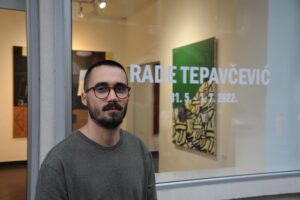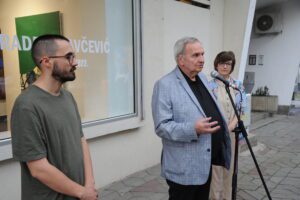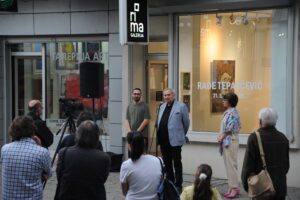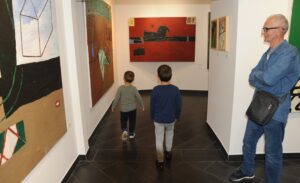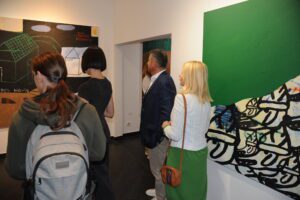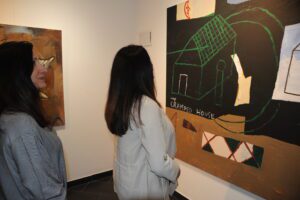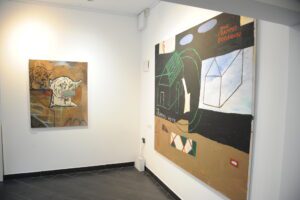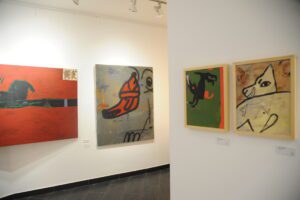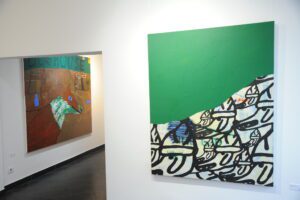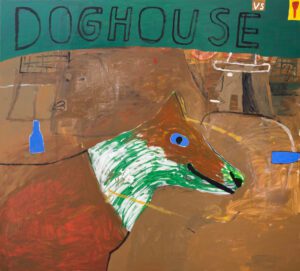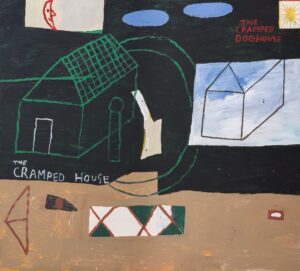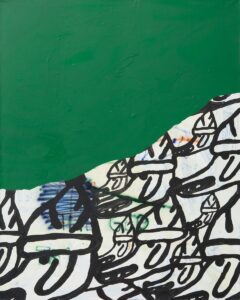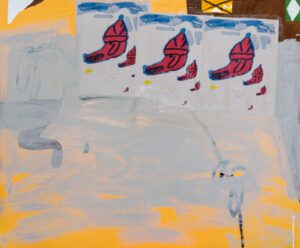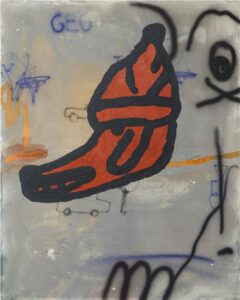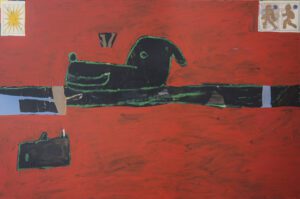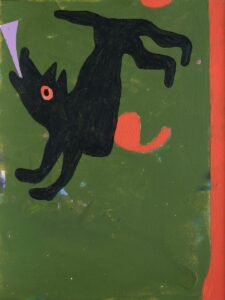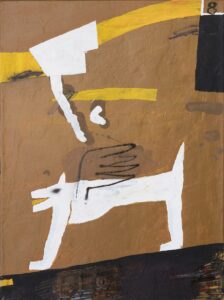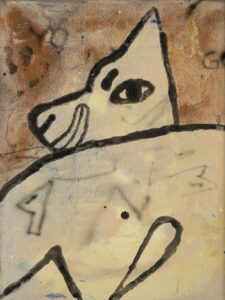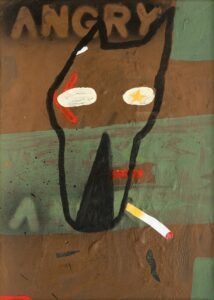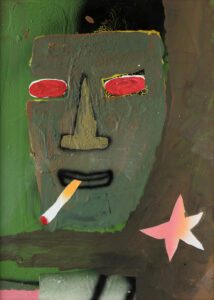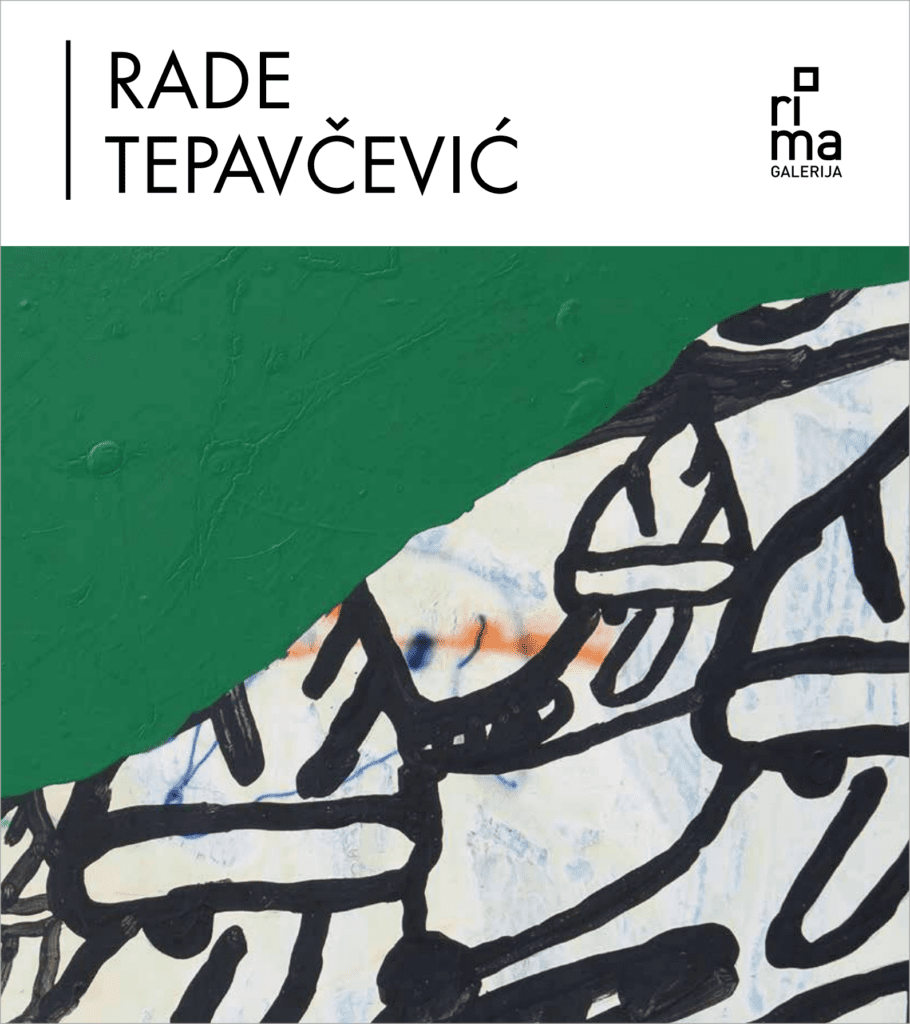Sava Stepanov
THE PAINTING OF RADE TEPAVČEVIĆ
Culture is founded on brave (and submissive!) exercise of such attempts that seem hopeless, but which always, in one way or another, indirectly or directly, bear fruit if we find enough strength and courage to undertake them and to persevere in their execution.
-Ivo Andrić
Since the recent turn of centuries, the art, just like the global society, has been in constant transition. The changes are great: current technologization and medialisation, in parallel with the culmination of liberal capitalism, have essentially altered the way of life and functioning of the world. All that has brought about radical changes in the domain of picture – in the early twenty-first century those were caused by a rapid development of the global system of new visual art quality. In that system, an individual picture (photograph, electronic/digital) is no longer a reflection of reality. “Worked” through computer hard- and software processes it is liable to numerous reformulations and manipulations. In addition, such a picture very quickly acquires the status of a global fact since by means of the Internet it has been essentially incorporated in the praxis of the current society. Today, a digital picture is an unavoidable constituent of our everyday and the new visual art quality from the beginning of the century has been fully appropriated into the system of furious capitalism; moreover, it has become one of the pillars of the capitalist society where everything is based on the power of big corporations. The present-day functioning of the world is based on the power of computer technology that has so quickly and fundamentally changed social relationships. Together with the understandable progress, technologization and medialisation have been, almost simultaneously with their objectification, transformed into the means of manipulation. In that sense, this can be interpreted as the realisation of George Orwell’s futurist visions from seventy-five years ago, published in his novel “1984” (1948) describing the life of an individual living in an extremely totalitarian society, controlled every day for twenty-four hours a day. Engaged in the current social ambience, the American philosopher Shoshana Zuboff talks about “supervisory capitalism” where man is permanently filmed, followed, controlled, categorised, manipulated. And in a recent interview the Norwegian director Tonya Hessen Shell stated with reference to her film “i-Man” “we have created Matrix which it is impossible to leave completely and into which we shall descend ever more deeply” and so continue the global processes of dehumanisation, alienation, insecurity, unemotionality… Of course, in the environment of the raging liberal capitalism which has established full control over the society there will come a more direct and uncompromising use of man in the processes of big capital accumulation…
In such circumstances of dislodging the myth about painting as the leading visual art power, Rade Tepavčević, an artist from Novi Sad begins his painterly adventure. It has become evident at the very beginning that the young painter had enough intuition and creative potential to see through and accept the impulses of contemporaneity in order to react in an authentic painterly way to everyday happenings. Tepavčević confronts the art and medialised world with his picture which discloses all of his invested energy, expressiveness, his intention to show his own relationship to the chosen topic and content, and his own and personalised thinking about the essence of a painting. His authentic manner of painting keeps the exclusive quality of a sensibilized hand made product. Divna Vuksanović, a Belgrade theorist of contemporary art is convinced that a contemporary artist can oppose general digitalisation by traditional procedures which assume “a return to body/hand”, thus invoking artist’s direct activity in textual happenings. Anyway, the relations have been changed – a contemporary painter has lost the aura of exclusiveness held by his predecessors in some previous social circumstances, but he is still a creator of integrity and authority, an artist who is needed by the society in this time of permanent crisis.
The subject matter and contents of Tepavčević’s paintings are found in everyday events, phenomena, experiences and things. His expressive manner of defining motifs, his expressionism of colour and form, his bad-painting manner, simple but frequently also robust appearance of the painted motifs, his big and spatial formats – those are façade manifestations of his painting. The present-day observer finds all those characteristics appealing because he is educated on medialised pictures whose mimetic perfection (real or virtual) is getting ever more tiring because it exhausts our curiosity and leaves no space for a complex perception since the seductive play of individual interpretation of painted scenes has been cancelled. In that sense, the paintings of Rade Tepavčević appear to be provocative, since his motifs, although seemingly relaxing, are produced by a very serious and passionate thinking about the destiny of man in the current world full of tense situations, conflicts, tragic fates and the absence of any kind of tolerance or empathy. Tepavčević expresses his attitude in an authentic allegorical procedure and in his paintings, just as in fables, the main protagonist is a dog with human characteristics. The “twisted” allegorical expression enables problematisation, analytic surveys, critical reactions and condemnation of the society in which we live. In Tepavčević’s paintings the small doghouse reminds us of the small houses where people live; the announcement of dog sale warns us of the destiny of man, reduced to resource potential in the raging and unbridled capitalism, whose working function if sold very cheaply: tattooed dogs invoke problems of the contemporary alienation of man who frequently insists on affirming his own message and personal identity by tattooed drawings and signs; dogs marked by protective symbols of big corporate systems like Coca-Cola or Nike refer to the consumer and market spirit of the world in which we live…
The creative procedure for all those motifs is exceptionally interesting. Tepavčević arrives at his final solutions by repainting previous paintings, although each of them had previously looked like a completed work. The creative process of a picture __________ can be reconstructed owing to the preserved snapshots of the later repainted images. A central linear drawing of the head of a man-like dog dominates the first image on the spacious black background which is sporadically, along the edges, covered by more or less geometric fields of red, green, yellow, white, blue and light umber, then with two collaged printed motifs (the sun, stylised human figure in movement) in the upper corners of the picture. Therefore, it is the motif that could be accepted as a complete whole replete with metaphorical meanings, which opens up numerous possible interpretations in front of the observer. Nevertheless, after certain time Tepavčević returns the painting to his easel and changes the central drawing so that instead of a dominant man-like head of a dog he draws three dog heads in the central part with an expressive green line and a zig-zag lined ribbon in the lower part. That alteration does nor change the metaphoric concept fundamentally but it does change the rhythm and dynamic of the ornate composition in the painting. The picture “changed” in this way conveys a well-sublimated content, its plastic solution and the philosophic-poetic suggestiveness. However, only with new repainting (or over-painting) Tepavčević realises a drastic change: he repaints almost the entire surface of the picture with red paint so that the facture retains visible traces of artist’s expressive gesture; in the centre he leaves the profile of the dog, and the dog is positioned on a narrow ribbon of black paint, also kept from the former picture; below the horizontal he adds a hardly legible rectangular portrait of a human head and keeps collage applications in the upper corners of the picture – one of them reveals the painter’s added intervention.
Obviously, Tepavčević’s path to a painting is very specific – the motif and plastic constitution of the first and the third picture are totally different, and the process of transformation it is obviously long-lasting and complex. The painter himself says that this is his almost usual manner of search for clear definitions of his own ideas, views, the understanding of a painting and its meaning. In the artist’s studio, the author of these lines remembered similar procedures in art history – the most famous is the one from 1955, made eternal in the documentary “Mysteries Picasso” by the French director Henri Georges Clouzot, where the great artist continuously transforms, in a single séance, motifs from the initial scene of flowers into a fish, then a cock, a face and finally in a totally expressionistically defined portrait… Contrary to this film, which proves Picasso’s enormous creative skills at the time of post-war enthusiasm and progress, the action of young Tepavčević is somewhat forced – the present moment is full of numerous life sufferings. The man of the present day has been caught in the trap of global crisis and his endangered state is of existential significance. The iconographic structure of Tepavčević’s paintings is dedicated to this: it is a commentary to our difficult every day. All those scenes of dismembered men, dogs, heads painted separately and fragmented presentations of divided limbs, “speak of the existence of a deep dichotomy of spirit and body in a contemporary man, about the dominant metaphor of cultural, political and personal schizophrenia troubling the contemporary world” (Marsha Tucker).
Undoubtedly, the paintings of Rade Tepavčević represent a serious discussion of current reality. The young painter is a worthy verifier, commentator and critic of current happenings. His picture is stratified – its visible content has a firm foundation in those repainted images with truly experienced scenes. In the complete, final painting, one cannot see much of this, but it possesses internally the existing tectonic strength which has configured, stretched, improved the visible motif, its effectiveness and meaning. Such a painting is convincing and with such a painting it is quite possible to create the awareness of the character of our time and the need to reshape it.
And, for the end, instead of a conclusion, the author of these lines recommends to his reader to read again the short note of the wiseman Ivo Andrić, quoted before this text. I am convinced there is reason for that particularly regarding the painterly works of Rade Tepavčević.
